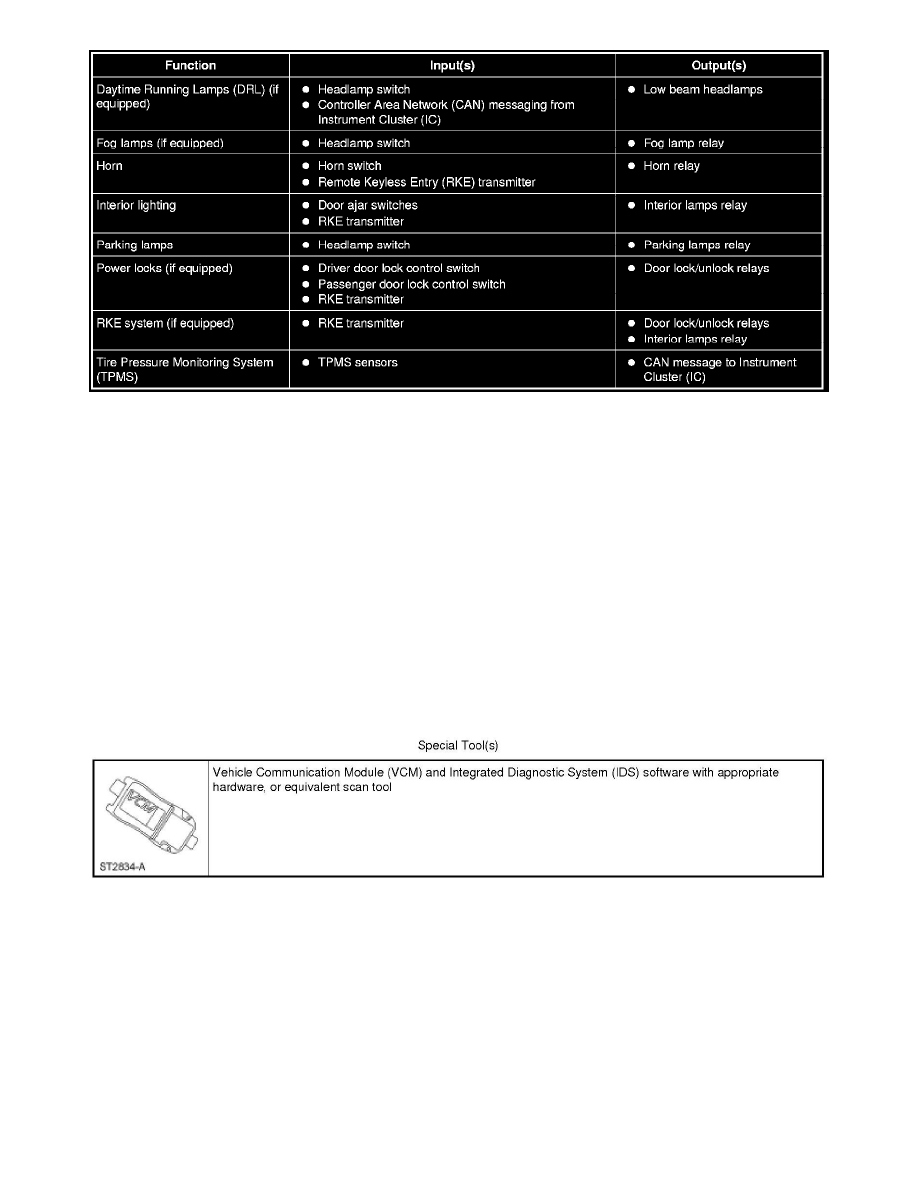Ranger 2WD L4-2.3L (2009)

In addition, the SJB is involved in other vehicle systems through communication over the Medium Speed Controller Area Network (MS-CAN). For a
detailed list of SJB network inputs and outputs, refer to Information Bus, Principles of Operation.
Some SJB parameters are programmable. Two types of programmable parameters are available: vehicle configuration and customer preference. For
information on programmable parameters, refer to Information Bus.
The SJB utilizes a protective circuit strategy for many of its outputs (for example, the headlamp output circuit). Output loads are monitored by the SJB
for excessive current (typically short circuits) and are shut down (voltage or ground provided by the module are turned off) when a fault is detected. A
continuous DTC is stored at that time for the fault. The circuit will then reset after an ignition cycle or customer demand of the function (switching the
component on, 30-minute battery saver being energized).
When an excessive circuit load occurs several times, the module shuts down the output until a service procedure is performed. At the same time, the
continuous DTC that was stored on the first failure will not clear by a command to clear the continuous DTCs. The module will not allow this code to be
cleared or the circuit restored to normal until a successful on-demand self-test proves that the fault has been repaired. After the on-demand self-test has
successfully completed (no on-demand DTCs present), the continuous DTC will have been cleared and the circuit function will return.
Special Tools Used With Diagnostics
Smart Junction Box (SJB)
